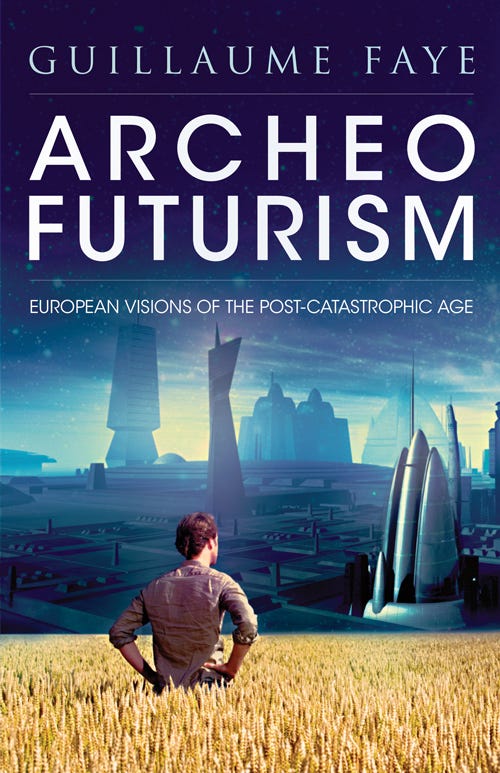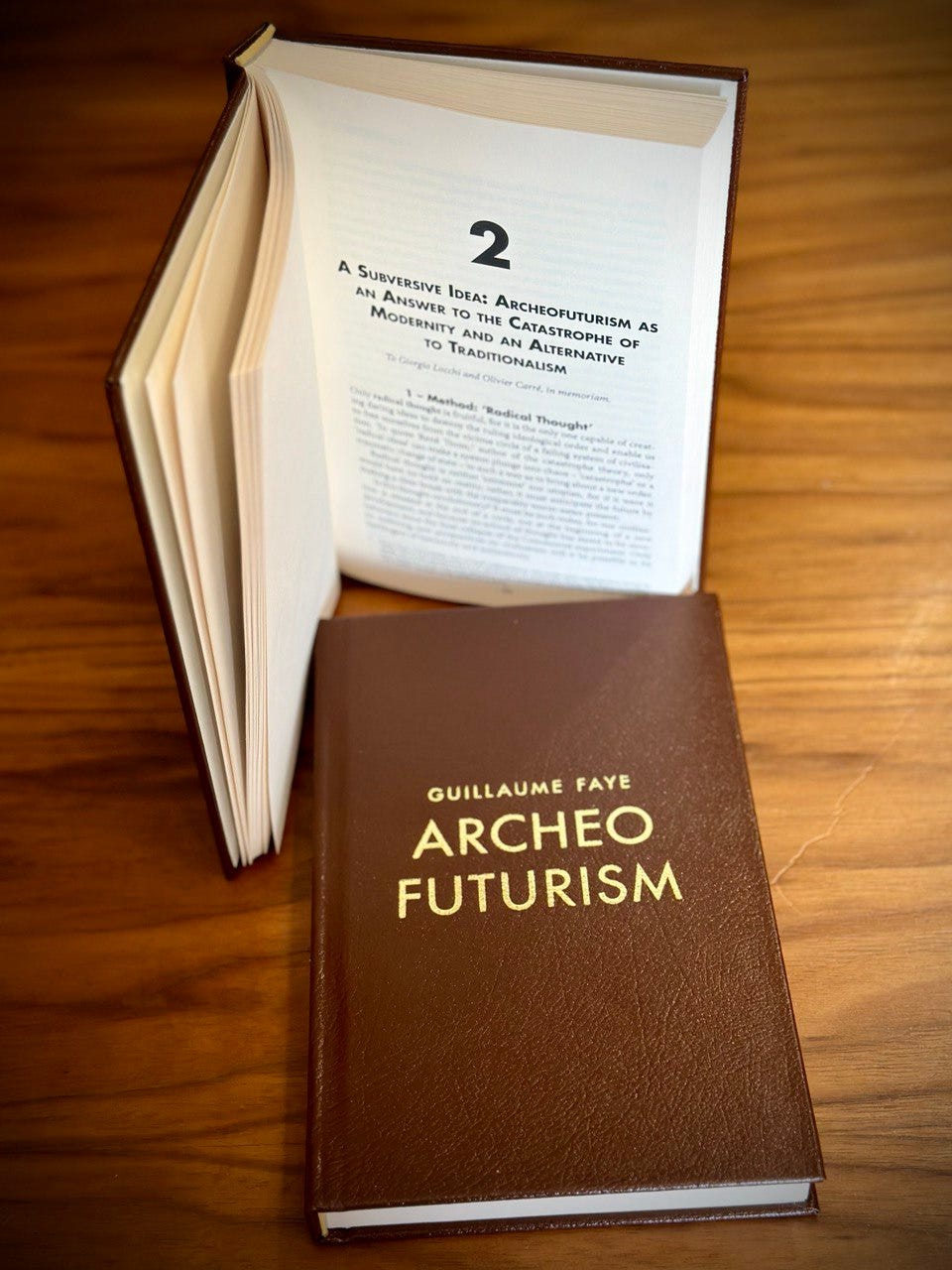The screen in front of Dimitri displayed the speed of the underground train: 1,670 kilometres per hour. On a simple map, a luminous dot indicated its position: ten minutes away from Paris Montparnasse.
Paris… A city that must have been magnificent in the twentieth century, Dimitri thought. He had few memories of it. He was only ten in 2016, when his family had fled the city plagued by anarchy and hunger to return to Russia. Most of the monuments had been burnt and destroyed, and its museums and treasures had been pillaged during the civil war that had broken out before the Great Catastrophe. Today, the autonomous state of Île-de-France was carrying out restorations and reconstructions, but Paris was unlikely to ever return to its former glory. The only way to learn what the Mona Lisa, Sainte-Chapelle, the Eiffel Tower or the Louvre looked like was to visit virtual websites with 3D images.
Dimitri Leonidovich sighed in sadness at these unpleasant thoughts and took out his multi-purpose laptop computer — every high-ranking imperial officer had one — from its case. This was a genuine wolf-fur case decorated with a double-headed Eagle on a red-and-white chequered background.
Dimitri opened the small object, which served almost any purpose.
He adjusted the screen and keyboard and immediately Vega, his ‘virtual secretary’, appeared in 3D. He had created an ideal female assistant for himself on his quantum computer to be the opposite of Mrs. Groux, the dreadful and all too real secretary who worked for him in the headquarters of the Imperial Government in Brussels — a fat and repulsive old hag. His virtual secretary Vega had perfect measurements, always appeared in scanty dresses and made suggestive remarks from time to time; she knew all of Dimitri’s life and shared his intellectual outlook. Named after one of the stars shining in the Siberian sky, she was the woman of Dimitri’s dreams. He had created her in secret, keeping her existence concealed from his wife Olivia, who did not know the access code to the programmes of this extraordinary GPT (Giga-Power of Treatment) quantum computer which the huge Typhoone company had produced exclusively for the new aristocracy: the upper echelons and high-ranking civil and military engineers of the Federation. The GPT also served as a mobile phone, a fax and a multi-purpose terminal connected to the Euronet, and could communicate with the whole world by satellite, even from inside railway tunnels.
To prevent those next to him from overhearing his conversation (the planetrain travelled in the vacuum, magnetically suspended, and thus made no noise whatsoever), Dimitri put on his earphones. He switched the machine on and then typed ‘Vega’.
The first words of his virtual secretary were, ‘I went for an evening dress. It’s black and see-through. Do you like it, Master?’ A luscious and curvy brunette with a mischievous nose and sultry look, Vega had been meticulously designed by Dimitri with the help of a VSP (Virtual Service Personnel) programme. She slunk sensuously across the small screen in 3D.
Dimitri replied, ‘That’s perfect, Vega. I am now on the bullet-train, returning from an arbitration meeting in Brest. I will be spending fifteen days’ holiday at home, in eastern Siberia, before visiting Brussels again.’
The beautiful girl smiled and stroked her hips.
‘Master, I suggest you disconnect from the small screen of the GPT computer and plug into the one in the seat in front of you. You’ll be able to see me in a larger format.’
Dimitri hadn’t thought of that. He unrolled a tiny wire which he plugged into the screen embedded in the seat. Immediately the image of the virtual girl appeared in a larger size. She continued, ‘I would like to remind you that today is your wedding anniversary. You should get your wife a present.’
‘I have.’
Dimitri was bringing his wife a Celtic jewel in solid silver from the autonomous state of Brittany: a cross inscribed within a solar wheel with interlaced motifs and a large ruby in its centre. He had found it in a crafts market in the rural community of Landéda, near Brest.
‘I disconnected my private phone. Has anyone called?’
‘You have received two messages. Would you like to hear them?’ The first message was from Olivia, who confirmed she would be waiting for him at the airship port in Dorbisk.
The second message was from his friend Hans Gudrün, the governor of the state of Bavaria and a member of the Central Committee of the Federation (the body representing autonomous regions before the Imperial Government).
The Bavarian had called him on his videophone. An icon appeared in the top-left corner of the screen showing the smiling, ruddy face of the governor, who was wearing a green, feathered hat.
‘I hope you managed to solve our problems with those stubborn Bretons and defend Bavaria’s point-of-view. Expect a far more difficult negotiation after your holidays. Bavaria disagrees with the federal project for a solar powered high-energy plant. I hope you will take our view into account, my friend. Send my regards to Olivia and your children. I have booked a place of honour for you at the Munich Bierfest in September. Tschüss!’1
Dimitri would have to phone him back later. Gudrün was very kind, but shouldn’t put pressure on him like that, using their friendship as an excuse.
‘Any other news, Vega?’
‘Yes, Master. The last EKIS bulletin contains information that might interest you.’
The EKIS, or ‘Euro-Kotinent Information Service’, was an information network exclusively reserved for the leaders and cadres of the Federation. The media system that had been open to all in the Twentieth century had gradually disappeared, for it was thought to cause disinformation and demoralise the public by causing panic. With the help of keywords, Vega had selected news of interest for Dimitri.
‘I’m listening.’
The image of the virtual secretary shrunk to the size of an icon as a voice-over commented on the images now flashing across the screen. Vega had selected many news items, according to the centres of interest programmed by the Councillor. Dimitri focused his attention and fastened his seatbelt, for the train was rapidly decelerating and entering the underground station in Paris.
‘Demonstration outside St. Peter’s in Rome for the return of the Pope’ (a crowd was shown holding placards outside St. Peter’s, which was covered in scaffolding. The Roman Republic was rebuilding the Basilica, which had been destroyed during the war against the Muslims). The voice-over continued:
‘As is widely known, since the murder of the last Pope, John Mary I, in 2017, and the Great Catastrophe, no Pope has been elected. The Holy See collectively administers the Church. Since the schism of 2020, with the election of Popes Pius XIII, Pius XIV and now Pius XV, who is residing in Avignon, the traditionalist Church — which has been declared “impious” — has been calling for the return of “its” pope to Rome and the Vatican. The Holy See is refusing to meet this request, leading to the present traditionalist demonstration. Some protesters have travelled all the way from Poland by cart — a three months’ journey. No accidents have been reported so far. The Senate of the Republic of Rome is backing the Holy See and opposing the return of the Popes, in compliance with the Concordat of 2022 and in agreement with Father Diaz Fernandez, Superior of the Society of Jesus (the Jesuits). The Imperial Government has issued a bulletin stating that, in conformity with the principle of religious neutrality, it will take no side in the conflict, for this concerns an authorised religion within the Federation, Christianity. The druidic representatives of the Great Brotherhood of Cernunnos,2 assembled in a conclave in London and representing all Celtic pagan cults, have issued a statement calling traditionalist Catholics ‘to join them’. The Imperial Government and the Central Committee of the Party remind all civilian cadres and members of the armed forces that they must not become involved in these disputes and must keep a strictly neutral stance.’
The demonstration outside the Vatican disappeared from the screen and was replaced by the image of a knight in armour from Poland, waving a white flag emblazoned with the monogram of Christ amidst the applause of the crowd.
After a ‘beep’ a new image appeared. In a hangar, a bizarre engine with enormous solar panels was shown, as big as a railway coach and surrounded by engineers at work. The voice-over explained, ‘This is IPC, the new Ionic Propulsion Cruiser developed by the Typhoone 4 company and by Euromotor on the basis of a 1995 project3 that was lost and has now been rediscovered. More efficient than space vehicles with conventional propulsion, the IPC can reach our base on Mars in two rather than nine months thanks to its “gradual acceleration” from the orbit of the Moon. It is fuelled by xenon, a rare, electrically charged gas that can be easily stored and which sets off a flux of high-energy ions. This sequence of images was filmed in an IPC assemblage factory in Toulouse, in the Occitan Republic.’
This was followed by another scene: a huge missile bearing the red-and- white chequered flag of the Empire was launched with a pyrotechnic show of lights and smoke. The voice explained, ‘Yesterday, at 2:45 AM GMT, the first IPC with five astronauts onboard was sent into lunar orbit by a Leonida missile, which left our floating platform for equatorial launches in the middle of the Atlantic. This revolutionary spacecraft will reach our base on Mars in 60 days. We are now well ahead of the Chinese and have a decisive advantage over them for the conquering of Mars.’
The image of the missile, whose white banner disappeared above the clouds, was replaced by a gaily coloured feast: bare-chested men, girls dancing with embroidered dresses, beef roasting on embers…a merry crowd of farmers. This was taking place at the centre of a vast clearing. The camera moved across the landscape: mountain peaks dotted with tight rows of white villages. The voice commented, ‘This is the feast of the summer solstice in the Republic of Lacedaemonia, which includes the Peloponnese. Since 2030 we have been witnessing a huge renaissance of this ancestral custom and it now represents a key moment in the life of many rural communities of the Federation. On the night of 21 June, the longest of the year, a large pyre is lit [the image of a brazier was shown]. For three days, huge festivals take place. Farmers, sailors, craftsmen, as well as engineers and imperial officials assemble from the four corners of the Empire to take part in this folk celebration in the ancient city of Sparta that stretches back into the mists of time.’
This was followed by some interviews: one with a Provencal mutton farmer who had travelled forty days by horse to reach Sparta (‘My sheep are well protected against wolves: I have three daughters and two guard dogs’), and another with a Swedish cosmonaut and Odinist who had arrived with his wife and six children on the Northern Europe-Athens bullet train and then a mini-airship taxi (‘We live near local people, in a rustic house, and wash with water from wells — but it’s still a good deal more comfortable than the Moon base!’).
The commentator, most probably a member of the Party, ended his report with the words, ‘All members of the Federation should bear in mind that the Sparta Solstice celebration is entirely self-funded.’
Get the paperback, hardcover, ebook, or audiobook of Faye’s Archeofuturism here.

Or purchase the limited leather-bound collector’s edition of Faye’s Archeofuturism:
US customers
European customers
Now with a flat shipping rate of $7.50, both for US and European customers!

Footnotes
German: ‘bye’.
Cernunnos is a god of the Celtic religion. Icons of him have been found in France and Germany.
This probably refers to Deep Space One, an ion-propelled space probe that was launched as an experiment by NASA in 1998. The contract was secured by Hughes Electron Dynamics in 1995.









